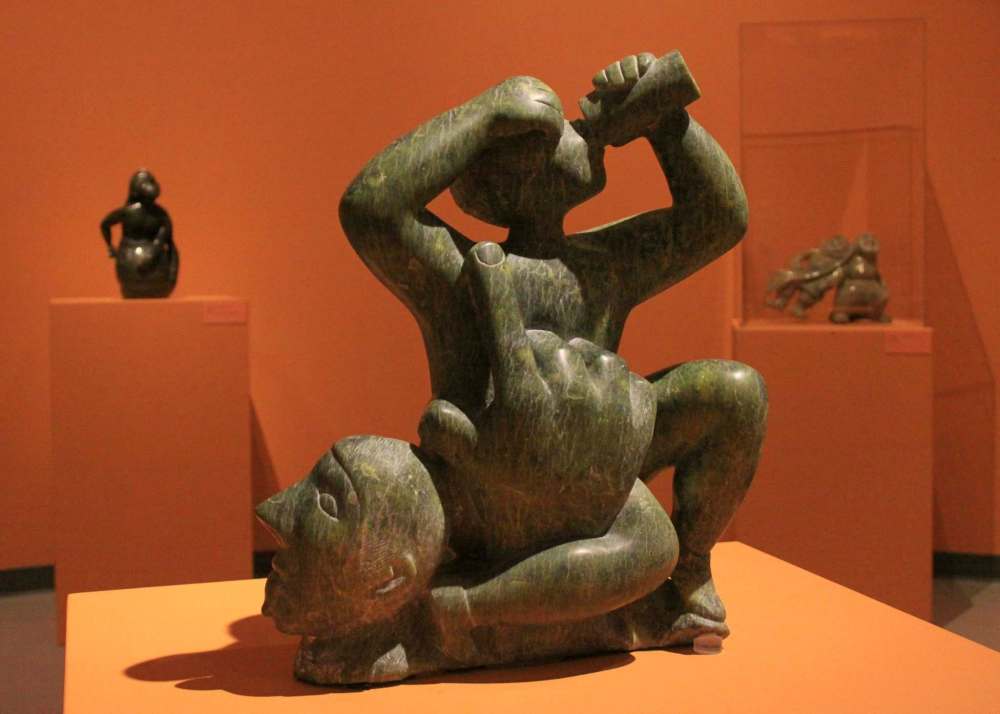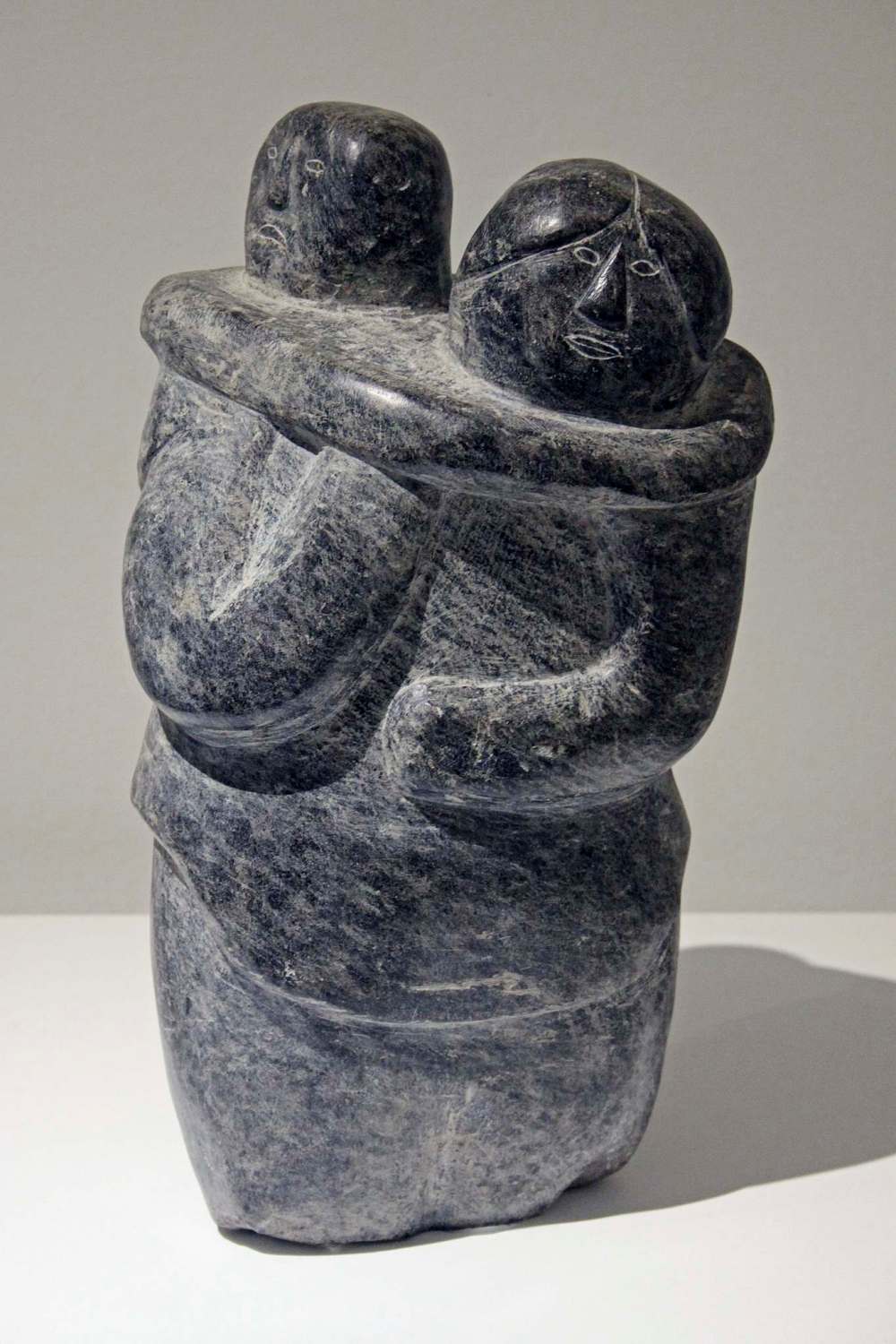‘I carve about my life’
A career-spanning survey tells a groundbreaking female sculptor's 'story in stone'
Advertisement
Read this article for free:
or
Already have an account? Log in here »
To continue reading, please subscribe:
Monthly Digital Subscription
$0 for the first 4 weeks*
- Enjoy unlimited reading on winnipegfreepress.com
- Read the E-Edition, our digital replica newspaper
- Access News Break, our award-winning app
- Play interactive puzzles
*No charge for 4 weeks then price increases to the regular rate of $19.00 plus GST every four weeks. Offer available to new and qualified returning subscribers only. Cancel any time.
Monthly Digital Subscription
$4.75/week*
- Enjoy unlimited reading on winnipegfreepress.com
- Read the E-Edition, our digital replica newspaper
- Access News Break, our award-winning app
- Play interactive puzzles
*Billed as $19 plus GST every four weeks. Cancel any time.
To continue reading, please subscribe:
Add Free Press access to your Brandon Sun subscription for only an additional
$1 for the first 4 weeks*
*Your next subscription payment will increase by $1.00 and you will be charged $16.99 plus GST for four weeks. After four weeks, your payment will increase to $23.99 plus GST every four weeks.
Read unlimited articles for free today:
or
Already have an account? Log in here »
Hey there, time traveller!
This article was published 08/09/2016 (3372 days ago), so information in it may no longer be current.
‘Some people write about their lives,” Oviloo Tunnillie remarked in 1997, “but I carve about my life. That is the way I want to be known.”
At the Winnipeg Art Gallery, immersed in her life’s work, Oviloo’s simple statement of purpose seems both apt and too modest, at once encompassing and playing down her work’s commanding scope and insight. In 40 years spent carving stone, she shaped rough Baffin Island serpentine into concise, concrete reflections of her own experiences, convictions, aspirations and imaginings — defying painful circumstances and others’ expectations in the process.
The first sculpture she sold is one of the first we encounter in Oviloo Tunnillie: A Woman’s Story in Stone, which closes this weekend. Made in 1966 with the same simple hand-axes and chisels her father, Toonoo, used, it shows an abstract but entirely relatable, stoical-looking mother and her crabby child.

That it exists at all is as remarkable as its clean lines and expressive features. Born in 1949 in Kangia, a camp on Baffin Island, Oviloo took up carving at a time when this was men’s domain — though, like many in her creative family did, women might become respected graphic artists. Undaunted, she began carving full-time in 1972, supporting her family while holding true to her unique perspective and wide-ranging interests.
Southern buyers might have preferred natural or ethnographic scenes — parka-clad hunters, shamanic figures and polar bears — but from the beginning, Oviloo’s subjects were more personal, contemporary and trenchant. Sports stars, ballet dancers, a woman masturbating, another on the toilet, mermaids, a princess, and a priest all feature in her diverse cast of characters.
Works from the ‘90s onward revisit her earliest memories, torn from family for years a time receiving treatment for tuberculosis in different Manitoba hospitals. Her hair bobbed short and fringed, dressed in hospital gowns, pyjamas and simple smocks, we find Oviloo walking the halls alone, teddy bear in tow, crying on a nurse’s lap, collapsed over a nightstand in tears or prayer, bolt upright in a hospital cot, screaming. The sculptures’ refined forms and features give them an iconic, timeless quality that contrasts sharply with their heart-wrenching specifics.
There are happier scenes of a reunited family, and the show’s most exuberant piece sees Oviloo on a sled, wind in her hair, face lit up with a sly smile and intense forward gaze. Others give rewarding insight into the everyday work of Cape Dorset artists. Sculpted figures carry drawings to the co-op to sell, lug heavy stones for stonecut printing, and contemplate uncarved blocks of serpentine, with Oviloo inventively contrasting two- and three-dimensional rendering and the textures of raw and polished stone.
The works turn look away from the harder realities of Northern life. One powerful sculpture shows an incapacitated woman slumped over a man’s shoulders, bottle still in hand. Another literally points a finger at qallunaat, white people, for introducing alcohol to Inuit communities. A man throws his body over a pack of dogs to protect them from being shot by southern agents. Nude (Female Exploitation) painfully revisits memories of childhood abuse by medical personnel.
The show comes down Sunday, Sept. 11, coinciding with the recent announcement of new federal funding for the WAG’s planned Inuit Art Centre, and it should help pique excitement for the project. It’s certainly not to be missed.
Rooted in histories of colonial violence and forced relocation and in complex exchanges between traditional culture and market forces, Inuit art presents unique challenges for institutions. In A Woman’s Story in Stone, the works hold their own as incisive, accomplished sculpture, but the WAG and curator Darlene Coward Wright ensure that Oviloo Tunnillie’s authentic voice is heard at every turn.

We’re better for it. The artist died in 2014, but she still has quite the story to tell.
Steven Leyden Cochrane is a Winnipeg-based artist, writer and educator.


 Oviloo Tunnillie
Oviloo Tunnillie 